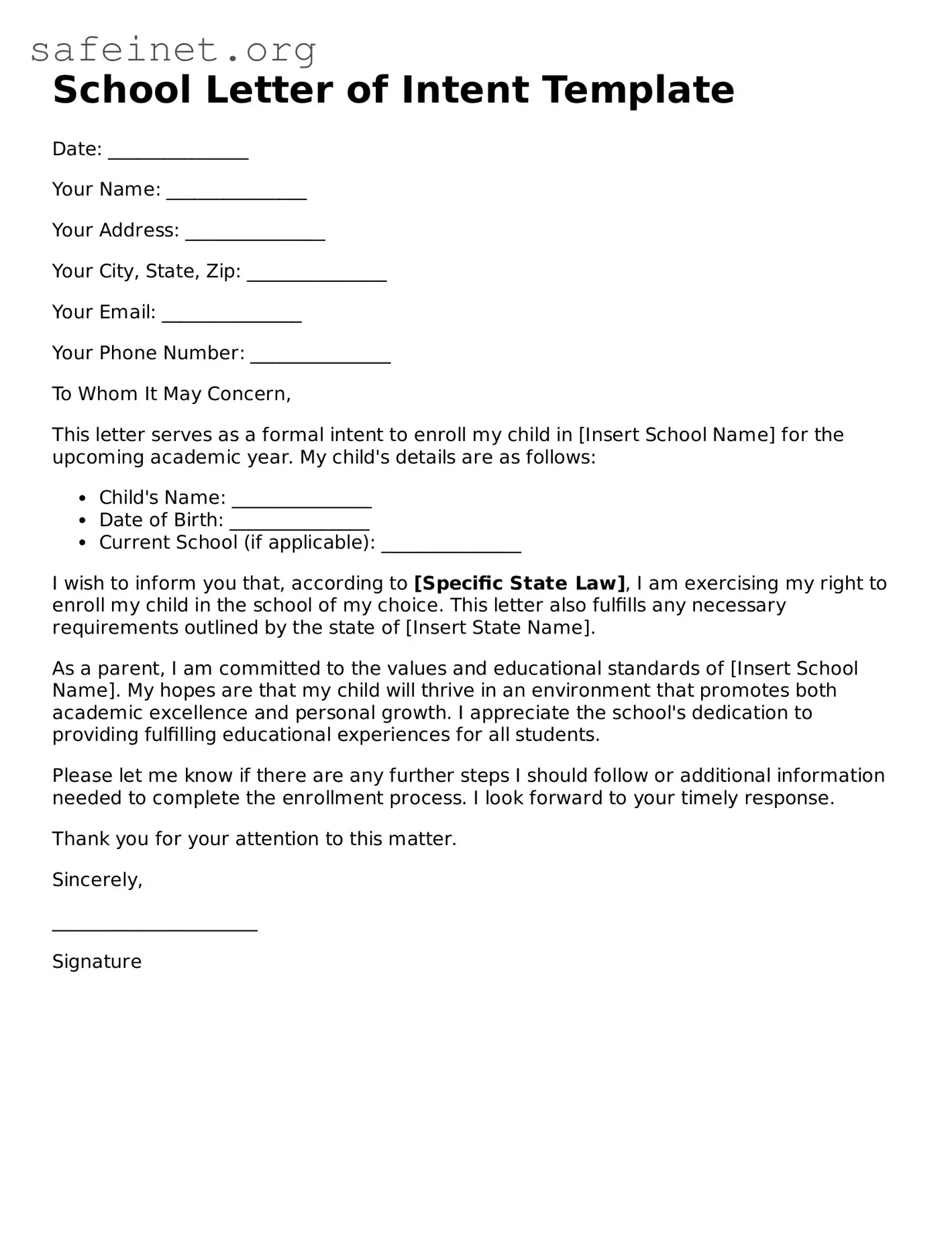The School Letter of Intent shares some similarities with a Memorandum of Understanding (MOU). Both documents outline an intention to collaborate without creating a legally binding contract. An MOU clarifies the responsibilities and expectations of the parties involved, just like the School Letter of Intent communicates the intentions of students or families regarding school enrollment. Each serves as a preliminary step in solidifying a relationship between the parties, often used as a framework for future agreements.
Another document similar to the School Letter of Intent is the Enrollment Agreement. Both documents express a commitment to enroll in a particular institution. However, the Enrollment Agreement usually entails more specific terms regarding tuition, fees, and obligations that families must adhere to. While the School Letter of Intent signifies interest, the Enrollment Agreement formalizes the engagement and includes detailed terms and conditions on enrollment.
A Letter of Intent for College Admissions is also comparable to the School Letter of Intent. It often communicates a student's desire to attend a specific college or university. This document can highlight the student’s academic achievements, extracurricular activities, and reasons for choosing the institution. Similarly, the School Letter of Intent reflects the goals and intentions of families related to a specific school, helping to initiate a candid conversation about the student’s future education.
The Letter of Interest serves another parallel. Commonly used in various fields, it expresses interest in a specific opportunity, like a job or academic program. In both the Letter of Interest and the School Letter of Intent, individuals convey their enthusiasm while seeking to highlight their fit for the opportunity. The main difference lies in context, with the School Letter of Intent focused on educational settings specifically.
A Proposal is another document that shares similarities with the School Letter of Intent. Each document outlines intentions and plans, albeit in different contexts. A Proposal details the specifics of a project or plan to gain approval or funding, focusing on what will be achieved. Meanwhile, the School Letter of Intent communicates the family’s intent and interest, setting the stage for further discussions about educational partnerships.
The Non-Binding Agreement is related as well. While both documents indicate a desire to proceed in good faith, they do not impose strict legal obligations. The Non-Binding Agreement facilitates discussions between parties, whereas the School Letter of Intent is primarily about educational commitments and intentions for a specific school or program.
The Letter of Recommendation can draw comparisons as well. While it serves a different purpose, both documents aim to support applications—be it for enrollment or admission. A Letter of Recommendation asserts the strengths and qualifications of a student, while the School Letter of Intent emphasizes a student’s aspirations and commitment to a particular institution.
Additionally, an Intent to Enroll form mirrors the School Letter of Intent. It expresses a student's decision to enroll at a specific institution, ensuring the school can plan for incoming students. Both documents reflect commitment and give the receiving party insight into the applicant's plans, but the Intent to Enroll often requires more formal steps and completion of specific requirements.
The Notification of Admission Acceptance is another related document. Both indicate the intention of a student moving forward in an educational setting. While the Notification of Admission Acceptance signals a definitive acceptance of an offer from a school, the School Letter of Intent simply expresses a genuine interest without the finality of an acceptance, allowing families to express intentions before official decisions are made.
Lastly, the Application Outline is another comparable document. It provides a roadmap for applicants to articulate their goals and interests. Much like the School Letter of Intent, the Application Outline helps guide the applicant's direction but typically focuses more on logistical and procedural details needed for admission rather than the emotional component of intention and desire.
